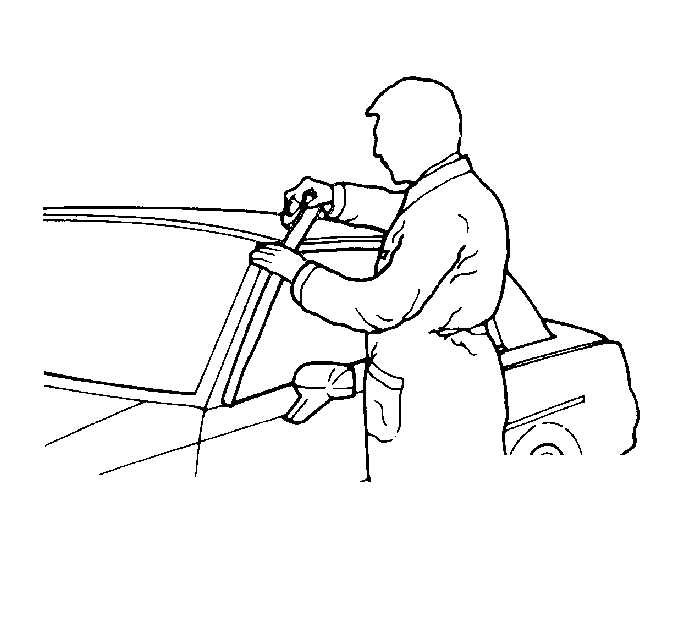Caution: An assistant should drive the vehicle while the technician checks for
the location of the reported condition. Otherwise, personal injury could result.
Important: Often there is one primary leak source and one or more secondary leak
sources that contribute to the noise condition. Repairing one of the contributing
leak sources may not completely repair the total condition, but only reduce
the condition.
- In order to analyze a reported windnoise condition, test drive
the vehicle. Many variables may singularly or collectively be attributed to
creating the objectionable noise condition.
- Use the following items during the test drive in order to aid
in pinpointing and marking the areas of the leak:
| • | A mechanic's stethoscope or a vacuum hose |
| • | Masking tape -- 51 mm (2 in) wide |
- Choose a regular route for the road test. The test road should
include smooth and straight streets that run in the following directions:
- Ensure that the area has little traffic or noise. These conditions
will interfere with the test.
- Drive the vehicle at the speed in which the noise was noticed
by the customer or until you hear the noise.
Do not exceed safe, legal speeds.
- Determine if the noise is an objectionable windnoise as opposed
to the normal or the standard sounds.
The noise is external windnoise if the noise may be heard with the door
window lowered while you drive the vehicle.

- Locate an external windnoise condition by taping
the following components until you eliminate the noise in order to pinpoint
the exact cause of the noise:
- If the noise cannot be heard with the windows lowered, one of
the following conditions is present:
| • | A body seam is leaking. |
| • | One of the following sealing surfaces is poor: |
| - | The window-to-weatherstrip |
| - | The door weatherstrip-to-door |
- Locate the source of the internal windnoise by taping off the
body lock pillar pressure relief valves.
This procedure causes the following conditions:
| • | The air pressure builds up inside the vehicle. |
| • | The windnoise is enhanced. |
- Internal windnoise is caused by air leaving the body.
- Trace the suspected seal using one of the following components
in order to locate the leak area:
| • | A section of the vacuum hose |
- Temporarily repair the condition using masking tape.
- Adjust the tape as needed.
- Continue testing in order to determine if one of the following
conditions exists:
| • | The noise has been eliminated. |
| • | Other leak areas exist. |
- After you locate all of the reported leak conditions, repair the
condition using the proper alignment techniques and sealing materials as needed.

